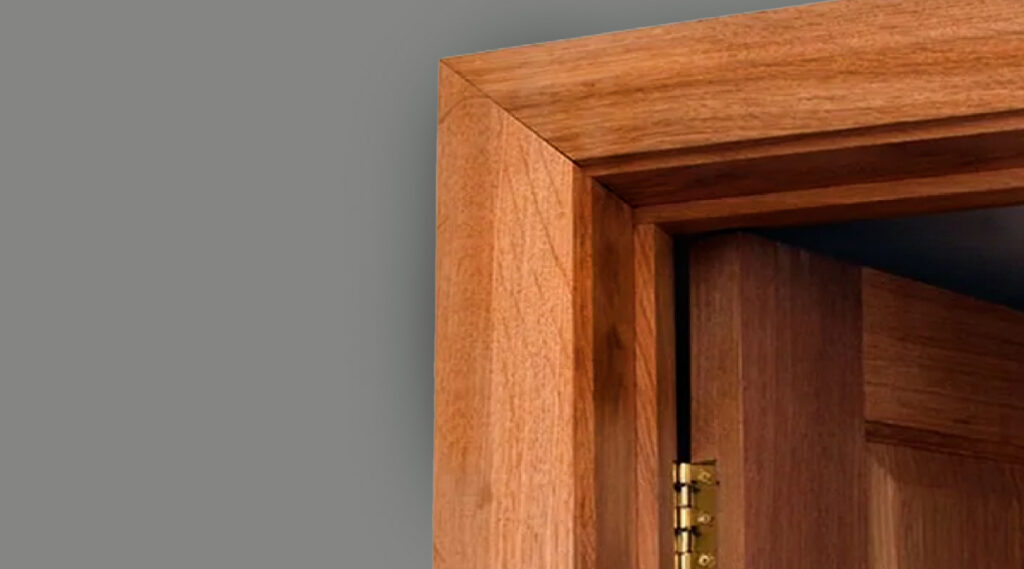When it comes to architectural and interior design, door frames often receive less attention than they deserve. However, a high-quality door frame is essential for structural support, security, insulation, and aesthetic value. Whether for residential, commercial, or industrial use, a door frame is not just a fixture—it’s the foundation on which every door performs its function.
What is a Door Frame?
A door frame is a structural element that supports and surrounds a door, enabling it to swing, slide, or close securely. It comprises horizontal and vertical components, typically the head, jambs, and sill. A well-constructed door frame ensures smooth door operation, prevents sagging, and contributes to the door’s overall life span.
Types of Door Frames
1. Wooden Door Frames
These are the most common in residential buildings due to their versatility and natural aesthetic.
-
Materials Used: Teak, sal wood, cedar, pine
-
Benefits:
-
Easy to shape and customize
-
Good insulation properties
-
Can be painted or polished
-
-
Applications: Homes, villas, boutique hotels
2. Steel Door Frames
Preferred for commercial and industrial buildings due to their strength and fire resistance.
-
Features:
-
High durability
-
Pest-resistant
-
Low maintenance
-
-
Applications: Hospitals, warehouses, office buildings
3. UPVC Door Frames
These are modern, energy-efficient, and weather-resistant.
-
Advantages:
-
Moisture-proof and termite-resistant
-
Requires no painting or polishing
-
Excellent insulation
-
-
Best for: Bathrooms, kitchens, modern apartments
4. Aluminium Door Frames
Lightweight yet sturdy, these frames are ideal for high-traffic areas.
-
Characteristics:
-
Corrosion-resistant
-
Sleek appearance
-
Recyclable material
-
-
Used in: Commercial spaces, showrooms, luxury homes
Components of a Door Frame
-
Head: The top horizontal section that spans the width of the doorway
-
Side Jambs: The vertical posts on either side of the door
-
Sill or Threshold: The bottom portion (optional in some door types)
-
Stop: A strip that prevents the door from swinging past the frame
-
Architrave (Casing): Decorative molding around the frame
Each part must be precisely engineered to ensure seamless alignment, especially in high-performance or weatherproof doors.
Standard Door Frame Sizes
While dimensions may vary depending on regional building standards, typical sizes include:
-
Height: 1980 mm to 2100 mm
-
Width: 700 mm to 1200 mm
-
Thickness: 100 mm to 150 mm (based on wall thickness)
Custom sizes are available for bespoke architectural needs.
Factors to Consider When Choosing Door Frames
1. Material Durability
The lifespan of a door frame depends largely on the material used. Hardwood and metal frames offer higher durability, especially in exterior environments.
2. Compatibility with Door Type
Different doors (flush, panel, sliding, French) require specific frame types and thicknesses.
3. Aesthetic Appeal
The frame should complement the door’s design and match the overall interior theme.
4. Resistance to Elements
For external doors, frames should be resistant to moisture, termites, and corrosion.
5. Ease of Installation
Factory-prepared and modular frames reduce labor time and ensure accuracy.
Installation of Door Frames
Pre-installation involves checking wall alignment, moisture levels, and surface preparation. Fixing the frame requires:
-
Anchoring using screws or clamps
-
Using packing wedges for balance
-
Ensuring plumb and square alignment
-
Sealing with foam or mortar
Post-installation finishes may include polishing, painting, or applying a veneer to match the door leaf.
Popular Finishes for Door Frames
-
Natural Wood Polish – Highlights wood grain for a rustic or classic look
-
Painted Finish – Matte or gloss in any color to suit modern themes
-
Laminated Surface – Offers a sleek and maintenance-free appearance
-
Veneered – Matches high-end designer doors with natural or engineered wood finishes
Door Frame Designs
Plain Rectangular Frames
The most common design, suitable for all types of doors.
Arched Frames
Aesthetic and luxurious, often seen in traditional homes and villas.
Double Rebate Frames
Offer enhanced insulation and sealing, often used with soundproof or fire-rated doors.
Sliding Door Frames
Specially designed to accommodate roller or track systems for sliding door panels.
Applications of Door Frames
-
Residential: Main entrances, internal doors, bathrooms
-
Commercial: Office entryways, conference rooms, restrooms
-
Industrial: Factory doors, warehouses, cleanrooms
-
Hospitality: Hotel suites, banquet halls, spa rooms
-
Retail: Showroom entrances, boutique display sections
Leading Door Frame Manufacturers in India
1. Century Ply
Offers engineered wooden door frames with termite and borer-proof properties.
2. Greenply
Known for eco-friendly, hardwood door frames ideal for luxury homes.
3. Tata Pravesh
Manufactures steel door frames that are durable and fire-resistant.
4. Fenesta
Specializes in UPVC door frames that offer weatherproof performance.
5. Duroplast
Renowned for manufacturing aluminium and UPVC door and window frames for modern architecture.
Benefits of Choosing the Right Door Frame
-
Enhanced Door Longevity
-
Better Security and Sealing
-
Improved Insulation
-
Smooth Door Operation
-
Stylish Appearance
Conclusion
A door frame is more than just a support structure—it’s a vital component that ensures your doors function efficiently while elevating your property’s design. Selecting the right frame based on material, application, and style ensures durability, security, and elegance for years to come. Whether you’re constructing a new home, remodeling an office, or developing a commercial property, investing in quality door frames is non-negotiable.


